RESERVOIR SEDIMENTATION AND TRANSFORMATION OF MORPHOLOGY IN THE LOWER YELLOW RIVER DURING 10 YEAR’S INITIAL OPERATION OF THE XIAOLANGDI RESERVOIR*
CHEN Jian-guo
International Research and Training Center on Erosion and Sedimentation (IRTCRS), Beijing 100048, China, E-mail: chenjg@iwhr.com
ZHOU Wen-hao, CHEN Qiang
China Institute of Water Resources and Hydropower Research (IWHR), Beijing 100048, China
(Received June 1, 2012, Revised July 14, 2012)
RESERVOIR SEDIMENTATION AND TRANSFORMATION OF MORPHOLOGY IN THE LOWER YELLOW RIVER DURING 10 YEAR’S INITIAL OPERATION OF THE XIAOLANGDI RESERVOIR*
CHEN Jian-guo
International Research and Training Center on Erosion and Sedimentation (IRTCRS), Beijing 100048, China, E-mail: chenjg@iwhr.com
ZHOU Wen-hao, CHEN Qiang
China Institute of Water Resources and Hydropower Research (IWHR), Beijing 100048, China
(Received June 1, 2012, Revised July 14, 2012)
The Xiaolangdi Hydro-Project is one of the large projects on the main stem of the Middle Yellow River. It has been operated for more than 10 years, since its impoundment in October, 1999. The reservoir has trapped 2.833×109m3of sediment, and caused the total erosion of 1.891×109t in the Lower Yellow River from October, 1999 through October, 2010. Not only the serious atrophied situation of the Lower Yellow River (LYR) has been resuscitating, but also many new phenomena of sediment transport and behaviors of channel re-establishing are coming into being. They are illustrated and discussed in detail in this paper.
reservoir sedimentation, density current, water-sediment regulation, artificial flood, channel siltation and erosion, erosion efficiency, river configuration
Introduction
The Lower Yellow River (LYR) carrying an enormous amount of sediment is notorious for its serious deposition. It has a channel composed of fine bed materials characterized by easy erosion, easy siltation and high speed of morphology changes. It has suffered two remarkable channel erosion processes in recent 50 years. The first continuous erosion along the river happened during 1960-1964 when the Sanmenxia Reservoir (SMX) was impounded[1]. After two re-construction operations of the reservoir, due to its serious deposition, the LYR returned to the state of severe siltation. Especially, under the deteriorated climate conditions, the rapid increases of water supply, and other human activities, the incoming runoff of theriver was dramatically reduced, the deposition in the main channel of the LYR was seriously increased, and the flood-conveying capacity was amazingly declined, thus the safety against flood along the LYR became a challenging issue. Faced with these severe situations, the Xiaolangdi Hydro-Project was forced to be constructed. Since the impoundment of the reservoir, the channel of the entire LYR has suffered a second continuous erosion, and then its vigor of flood conveyance, water supply, and eco-environment has been gradually recovered. Meanwhile, a series of new phenomena of reservoir sedimentation and channel re-establishing of the LYR have come into being, such as the patterns of reservoir deposition, the formation and the transport of density current, the characteristics and the efficiencies of erosion in the LYR, the impacts of bed sediment armouring, the relationship between reservoir deposition and river channel erosion, and the compensation index of reservoir deposition. All of them have enriched the connotations of the science of fluvial processes for the rivers with high sediment concentrations after the founding of large hydro-projects.
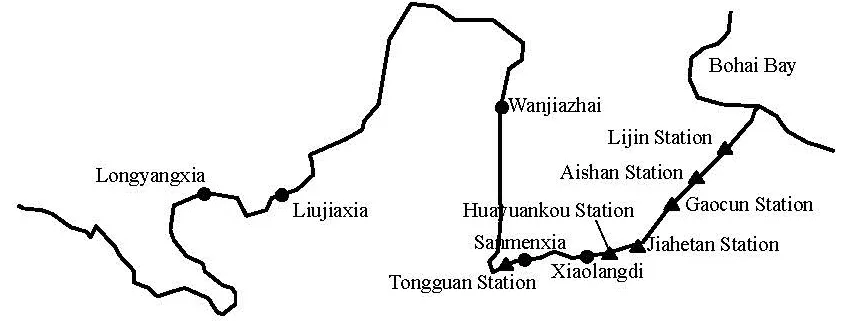
Fig.1 Locations of large hydro-projects on the Yellow River
1. The Xiaolangdi reservoir
1.1 Outlines
The Xiaolangdi Hydro-Project is situated 130 km downstream the SMX Project (Fig.1). It controls a catchment area of 0.694×106km2, 95.1% of the total above Huayuankou Station. The main objectives of the project include the flood prevention, the siltation mitigation, the irrigation and the water supplies for the LYR areas and the power generation. It consists of a dam with the maximum height of 173m, and a reservoir with a total capacity of 12.5×109m3: till October, 2010, the total deposition reached 2.833×109m3[2], about 22.7% of the total volume of the reservoir.
As an ordinary reservoir[3], the Xiaolangdi Reservoir operates in a higher water level in the non-flood period (from November to June next year) and in a lower water level in the flood season (from July to October).
A special operation mode named the “water-sediment regulation” was created and developed for the reservoir after a series of field experiments. The basic idea of the mode is to make a full play for the sediment carrying capacity of the flow in the LYR, which is directly proportional to the high power of the discharge through the river. So the water stored in the reservoir must be released in the form of the food peak, so as to scour and transport more sediment materials from the LYR into the sea. This mode can also mitigate the reservoir deposition and adjust the position of the deposition. They both are beneficial to the keeping of the effective volume of the reservoir.
This special operation mode consists of two stages. In the first stage, due to the needs of the flood control, the reservoir volume above the limited water level must be released in the time period from the late June through the early July, in other words, the water stored above the limited level of the Xiaolangdi Reservoir should be released as an artificial flood peak in accordance with the allowable discharge of the LYR. In the second stage, the water retained in the two upper reservoirs, the Sanmenxia and the Wanjiazai Reservoirs (Fig.1), is utilized. The water stored below the control level of the Sanmenxia Reservoir is released to enhance the erosion in the head reach of the Xiaolangdi Reservoir, then the water retained in the Wanjiazai Reservoir is released to scour the head reach of the Sanmenxia Reservoir, and the muddy water with higher concentration passes through the Xiaolangdi Reservoir to strengthen the scour in the reservoir. During the second stage, most of the scoured fine sediment forms a density current in the Xiaolangdi Reservoir and sluices with the artificial flood out of the reservoir.
Since 2005, the operation mode of the watersediment regulation has been formally applied as one of the operation modes of the reservoir.
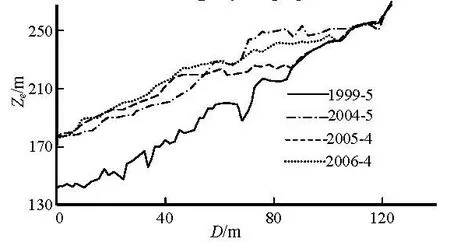
Fig.2 Longitudinal profile of Xiaolangdi Reservoir
1.2 Reservoir sedimentation
During the initial stage, most parts of the incoming sediment are trapped by the reservoir except a part of the fine particles carried by the density current. From September, 1999 through October, 2010, the total sediment trapped by the reservoir accounts for 85% of the incoming sediment load. The reservoir sedimentation is characterized as follows:
(1) Almost all of the coarse(d>5×10-5m) and the medium (2.5×10-5m Table 1 Density current in the Xiaolangdi Reservoir (2001-2009) (2) The pattern of deposition takes a shape of delta or cone, depending on the water level fluctuation, as shown in Fig.2, in which D is the distance, Zeis the elevations. The deposited delta can be easily eroded and then the eroded coarse sediment is easily settled down in front of the dam[4]. 1.3 Density current The density current is generated by the density difference between the incoming muddy flow and the water free of sediment in the reservoir[5]. To make a full use of the density current to drive fine sediment out of the reservoir is one of the major procedures to mitigate the deposition of large reservoirs in China. During 2001-2009, there were nineteen density currents generated in the Xiaolangdi Reservoir. 1.3.1 Origin of density current In the initial operation stage, two kinds of density currents, the natural density current and the artificial density current, were generated according to their origins. (1) Natural density current. The natural density current is formed by the incoming flood. When the muddy flood enters the head part of the backwater, a strong sorting process takes place. The coarse sediment is settled down, and the fine sediment is carried and plunged into the clear water to form the density current along the bottom of the reservoir[6,7]. The fine sediment of the density current has the median particle sizes (d50) of 5×10–6m-1.2×10–5m, andd90smaller than 3×10–5m. Fig.3 Sketch of typical cross-section of the Lower Yellow River Fig.4 Shrinkage of Mazhai cross-section (2) Artificial density current. The artificial density current is mainly generated in the second stage of the water-sediment regulation. The water stored in its upper reservoirs, the Sanmenxia and Wanjiazhai reservoirs, are fully regulated to form a density current in the Xiaolangdi Reservoir as mentioned above. 1.3.2 Sediment delivering ratio From 2001 through 2009, nineteen density currents including ten natural and nine artificial ones are generated in the Xiaolangdi Reservoir. The ratio between the out-flowing and incoming sediment loads (out/incoming) indicates the efficiency of the sediment delivering of the density current. As shown in Table 1, for the natural density current, the ratios vary from 0% to 83.16% with an average of 29.6%. The most important factors affecting the ratio are the incoming water and the sediment load. The greater the incoming water amount(flood) and the sediment concentration, the greater the delivering ratio becomes, because there will be more sediment to supply the current. However, if the incoming water amount or the concentration is very small, the density current will disappear altogether on its midway because no sufficient sediment can be supplied. For the artificial density current, during the earlier time period after the impoundment, the delivering ratio is rather small because the reservoir is nearly empty. Then, the delivering ratio gradually increases with the increase of the reservoir deposition. According to the data from the six artificial density currents during 2004-2009. the delivering ratios are 4.4%-61.8% with an average of 20%. The major factors influencing the delivering ratio include: (1) the water level of the reservoir, (2) the incoming discharge from the upper reservoirs, (3) the location of the plunging point, (4) the particle sizes in the bed sediment upstream the plunging point, and (5) the slope for the channel downstream the plunging point. As a reference, the sediment delivering ratios for the Guanting Reservoir (China, 1961-1964) are 18%-35% with an average of 24.5%, and for Hoover Reservoir (Mead lake) (USA, 1935-1936), they are in the range of 18%-39% with an average of 26.3%. Therefore, the average sediment delivering ratio for the density current of the Xiaolangdi Reservoir is close to those of the large reservoirs both in China and abroad. 2.1 Channel deposition and flood disaster The LYR has a history of more than 2800 years. Its ferocious flood caused 1 590 embankment breaches and 9 large scale migrations of the river course during 602B.C.-1938A.D.. The present river course was taken in 1 855 when a serious breach occurred at Tongwaxiang (below Jiahetan station, Fig.1). Although the embankments were reinforced 4 times since 1949, and the safety against flood has been mai-ntained for 60 years, but the threats of the flood disaster still remain as a challenge. The flood disaster is mainly caused by the tremendous channel deposition of the river[8]. It is estimated that the channel at Gaocun station was raised by 10.18 m from 1855 to 1960. In the 1950s, the annual deposition along the river amounted to 0.4×109m3. The river has become a so-called “perched river”. Moreover, since the sub-embankments were constructed along the low floodplains in the 1970s, the activities of the flow and the sediment were further limited, all sediment was settled inside the sub-embankments and resulted in a remarkable lifting of the channel and thus the “second perched channel” was formed on the primary “perched river”. Now, the river bed is 4 m-6 m (with a maximum of 10 m) higher than the ground outside the embankments (Fig.3). It might be imagined that once the local sub-embankment was broken, the swift flood flow would rush out of the sub-embankment, destroy the embankment and cause serious flood disasters in North China. 2.2 Channel shrinkage and increasing threats of flood disaster During 1985-1999, a rare dry hydrological spell reigned in the Yellow River Basin. The average annual runoff was only 67% of that during 1950-1999. And more medium and minor floods with high sediment concentrations, especially, hyper-concentrated floods, often occurred. All of these caused about 72% of the total deposition settled in the main channel, 2.57 times more than that on the floodplains inside the sub-embankments. As a result, the channel widths at most of the cross-sections decreased by 15%-50%, and the flow areas decreased by 45%-50%. The case became even more serious at wider cross-sections. For example, at the Mazhai section, the channel width was narrowed down from 1960m in May, 1986 to 425 m in May, 1994. The flow area under the bankfull stage was reduced from 5 080 m2to 1 075 m2after a severe deposition with a depth of 1.5 m-2 m (Fig.4). Therefore, the flood conveying capacities along the river were declined by 42%-61%. The LYR was seriously atrophied[9]. With all above grim situations, great effort was made to look for effective ways for flood control and the construction of the Xiaolangdi Project was considered as a good choice for flood prevention and sediment deposition mitigation of the LYR. 3.1 Changes of incoming runoff and sediment After the impoundment of the Xiaolangdi Reservoir, the Yellow River still suffered a dry hydrological spell. The average annual runoff and the average sediment load at the Tongguan Station, were 60.1% and 27.8% of those during 1952-2005, respectively. Due to the regulation of the Xiaolangdi Reservoir, the incoming runoff and the sediment load for the LYR saw some new features. (1) The runoff came mainly in the non-flood season. For example, before 1985, the incoming runoff in non-flood seasons accounted for 40% of the annual total, while during 1986-1999, it became 54% after the construction of a large reservoir at the Upper Yellow River, and during 2000-2009, it was 62%. (2) The incoming sediment load obviously decreased. The average annual sediment load was only 0.065×109t, merely 9% of that in 1986-1999. (3) The sediment particles were very fine. The median particle sizes of sediment released out of the reservoir were 5×10–6m-7×10–6m. (4) There were no large floods. The discharges in flood seasons were smaller than 1 000 m3/s. The changes of the incoming runoff and the sediment load have unavoidably altered the behaviors of the sediment transport and the sediment carrying capacity of the flow and thus led to new channel deformations[10,11]. 3.2 Amount of channel erosion Under the new conditions of the incoming runoff and the sediment load, the LYR suffered a remarkable erosion during the period from October, 1999 through October, 2010. The total erosion amounted to 1.891× 109t (1.351×109m3). Correspondingly, the total incoming runoff was 229.09×109m3. This implies that for every cubic meter of sediment to be eroded from the channel, 169.6 m3(121.2 m3/t) of water is required from the reservoir. Meanwhile, about 72% of the total erosion was concentrated in the upper reach covering a distance of 287 km. i.e., 35% of length of the LYR. Due to the higher sediment carrying capacity of a larger discharge, about 67% of the total erosion happened in flood seasons, although the incoming runoff in flood seasons was only 38% of the annual total. Fig. 5 Relationship between yearly channel erosion and yearly incoming runoff 3.3 Erosion efficiency of incoming flow Generally speaking, the amount of the channelerosion of the LYR is closely related to the incoming runoff and the sediment load, but in the initial operation period of the Xiaolangdi Reservoir, very little sediment load was released. Therefore, the amount of the channel erosion might be directly related to the amount of the incoming runoff. As shown in Fig.5, the channel erosion (S) was increased with the increase of the incoming runoff (W). However, with the development of the erosion, the rate of erosion was gradually decreased, and a dramatic dropping especially appeared after 2006. The ratio between the amounts of the channel erosion and the incoming runoff (the amount of yearly channel erosion/the amount of yearly incoming runoff) indicates the erosion efficiency (E) of the incoming flow, and, as shown in Fig.6, the obvious dropping of the erosion efficiency also happened after 2006. These indicate that the erosion capability of the incoming flow from the reservoir became weakened, especially, after 2006. Fig.6 Relationship between yearly erosion efficiency and yearly incoming runoff Table 2 Channel erosion in the LYR (October, 1999-October, 2009) 3.4 Types of channel erosion According to the incoming flow, the channel erosion of the LYR falls into the following types: (1) the erosion by floods, (2) the erosion by water-sediment regulation (artificial floods), and (3) the erosion by medium and minor flows both in flood seasons and non-flood seasons[12]. The three types of erosion are listed in Table 2. The total erosion induced by 13 floods amounts to 0.2991×109t, and the corresponding total incoming runoff is 26.154×109m3, accounting for 16.8% and 11.5% of the total erosion and runoff, respectively. The total erosion and runoff for 8 artificial floods are 0.3659×109t and 33.97×109m3, about 20.5% and 14.9% of the totals, respectively, while the total erosion and the total runoff for medium and minor flows both in flood and non-flood seasons are 1.118×109t and 168.126×109m3, accounting for 62.7% and 73.6% of the totals, respectively. All of these indicate that under the hydrological conditions of the initial operation period, the medium and minor flows both in flood and non-flood seasons play an important role in the channel erosion of the LYR. The influences of floods are rather small, because the large flood happens rarely and the discharges for most floods are small. However, in view of a full use of water resources and the enhancement of the channel erosion of the LYR, the operation mode of the artificial flood is still an effective measure with a bright prospect for the sediment management of the Xiaolangdi Reservoir, although its average efficiency (10.77 kg/m3) is slightly lower than that of the flood (11.43 kg/m3). Fig.7 Relationship between channel erosion and incoming runoff for flood Fig.8 Relationship between erosion efficiency and incoming runoff for flood 3.5 Erosion by floods According to the statistics, there were 13 floods happened in the LYR during 2002-2009, in which, four floods happened in 2003 and in 2005, respectively. All of them were medium and minor floods with the maximum peak discharge of 3 090 m3/s andthe minimum, 955 m3/s at the Xiaolangdi Station. As shown in Fig.7, the amount of the channel erosion also increases with the increase of the incoming runoff. The typical relation between the erosion and the incoming runoff even assumes a form of straight line in 2003, but the point for 2007 is distinctly lower than others. As for the efficiency of the channel erosion, it also increases with the increase of the incoming runoff, but the increase rate is gradually declined as shown in Fig.8. Moreover the slopes of the relationships in 2005, 2006, 2007 and 2009 are also gradually dropped down. Therefore, it can be concluded that the efficiencies of the channel erosion during the floods in years are also gradually decreased along the LYR, especially after 2006. Fig.9 Relationship between channel erosion and incoming runoff (for artificial floods) Fig.10 Relationship between erosion efficiency and incoming runoff (for artificial floods) Table 3 Median particle size of bed materials along LYR (10–5m) 3.6 Erosion induced by artificial floods According to the field data of 8 artificial floods from 2002 through 2009, as shown in Fig.9, the channel erosion also increases with the increase of the incoming runoff, but after 2006, the channel erosion is sharply reduced. The erosion efficiencies after 2006 are also reduced as compared with those before 2006 (Fig.10). For example, the erosion efficiency in 2009 was 59% of that in 2004, although their incoming runoffs were nearly the same. Fig.11 Relationship between annual compensation index and annual deposition of Xiaolangdi Reservoir Fig.12 Typical modification of cross-sections 3.7 Armouring of bed material The channel armouring is a common phenomenon for alluvial rivers after erosion by large reservoirs. Once a high flood or a large discharge occurred, the original armouring layer would be torn up and a new layer re-built to adapt to the new discharge. The median particle sizes of the bed materials on the surface along the LYR in post-flood seasons in recent ten years are listed in Table 3. Apparently, thesurface bed materials in 2009 were nearly two times as coarse as those in 1999. Table 4 Modification of river morphology from 1999 to 2009 Fig.13 Comparisons of water level-discharge relationships According to the theory of fluvial processes of alluvial rivers, as the fresh water from the reservoir goes though the downstream channel, the sediment carrying capacity of the flow would be adjusted to fit the new conditions of the incoming runoff and the sediment load through the adjustments of the longitudinal profile, the cross-sections and the compositions of the bed materials. Among them, the most sensitive factor is the adjustment of the bed materials. A slight change of the surface bed materials would result in a remarkable change of the sediment carrying capacity of the flow. The formation of the armouring layer on the surface of the channel increases the bed roughness, thus, decreases the sediment carrying capacity and the erosion capability of the flow. Especially, the armouring layer also decreases the supply of fine sediment and decreases the erodibility of bed sediment. All of those lead to the decrease of the channel erosion. Moreover, the armouring may be intensified after more and more finer sediment materials are washed away with the increased amount of the incoming runoff (discharge), but then, with the decreased amount of the incoming runoff (discharge), the weakened flow would go through the coarsened channel bed with higher roughness formed by the former large runoff (discharge), and with the less supply of fine bed materials, the channel erosion will be unavoidably decreased. This is why the amount and the efficiency of the channel erosion were abruptly declined after 2006. 3.8 Relation between river erosion and reservoir deposition In view of water and sediment management of the reservoirs, the reservoir deposition and the river erosion should be taken into account as a whole[13,14]. The reservoir deposition results in the channel erosion of the LYR, thus the loss of the reservoir volume might be compensated by the erosion of the LYR. The ratio of the annual channel erosion (EC) and the annual reservoir deposition(DR) can be taken as the compensation index of the reservoir (EC/DR). As shown in Fig.11, the annual compensation index is declined with the increase of the annual reservoir deposition, the more the deposition, the less the index. The average index during 2000-2009 was 0.5, which implies that 1 m3of the reservoir deposition (or the loss of the reservoir volume) could only be compensated by 0.5 m3of the channel erosion. Therefore, the water and the sediment management of the Xiaolangdi Reservoir should take measures to decrease the reservoir deposition and increase the channel erosion, so as to keep a high compensation index of the reservoir in the initial period. Table 5 Changes of flood-conveying capacity from 1999 to 2009 4.1 Modification of cross-sections After 10 year’s operation of the Xiaolangdi Reservoir, the channel morphology of the LYR has been modified[15]. The typical changes of cross-sections are shown in Fig.12. The sections are enlarged to some extent. Table 4 lists the comparisons of the cross-sectional morphology corresponding to the bankfull stages in 1999 and 2008. In the reaches upstream Gaocun, the channel widths in average were increased evidently together with the increases of depths, but in the reaches downstream Gaocun, the depths were more obviously increased accompanied with the less changes of widths. Taking the morphological parameter,/H, as the index of the morphology of the cross-sections, all parameters for the reaches were decreased as compared with those in 1999. This implies that all cross-sections become, relatively speaking, narrower and deeper after ten year’s erosion. Especially in the top reach of the LYR, Tiexie-Huayuankou, the channel became more distinctly narrower and deeper as compared with that before the impoundment of the reservoir. 4.2 Increases of flood conveying capacity Accompanied with the modification of the crosssections, the relationships between the water level (Zw) and the discharge (Q) are also changed (Fig.13). The wate3r levels corresponding to the discharge of 2 000 m/s in the pre-flood season of 2008 obviously dropped down by 1.74 m-1.85 m in the reaches upstream of Gaocun and 0.96 m-1.23 m downstream of Aishan, as compared with those in the preflood season of 1999. The flood conveying capacity can conveniently be expressed by the bankfull discharge. As shown in Table 5, the bankfull discharges in the post-flo3od season o3f 2009 were increased by 1 400 m/s-3 000 m/s, i.e., 47%-96% along the LYR than those in the pre-flood season of 1999, and gradually approached to those in 1985 when the river suffered a serious erosion under the favorable hydrological conditions during 1981-1985. From above analyses, it can be concluded that the LYR atrophied for nearly fifteen years has been resuscitating after ten year’s erosion. This should be considered as a great contribution of the Xiaolangdi Reservoir[16]. Fig.14 Comparisons of river configurations 4.3 River configuration According to the planform and the flow features of the channel evolution, the LYR can be divided into the wandering part, the transition part and the meandering part, but the active deformations of the channel mainly occur in the wandering reach upstream the Gaocun Station. In the other reaches, especially in the meandering reach downstream Aishan Station, the planform is rather stable under the tight controls of theriver training structures. During the initial operation, the changes of the river configuration in the wandering reach mainly have the following characteristics. (1) The intensities of the flow shifting and the main channel migration were declined. In the subreach from Tiexie to the confluence of Yi-luo rivers, the average shifting of the main flow during 2000-2008 was 34% of that during 1960-1964, and in the sub-reach of Jiahetan-Gaocun it was only 16%. (2) As a whole, the configuration tends to be smooth and stable. For example, the configurations of the Huayuankou sub-reach in 1999 and 2009 were quite similar (Fig.14(a)). However, in the individual sub-reach, some river bends occurred. As shown in Fig.14(b), there were five new bends appeared in the sub-reach of Liuyuankou in 2009, and the river appearance assumed a pattern of meandering. The main causes for such changes are the combined influences of the incoming runoff and the boundary conditions[17]. (1) Small incoming runoff. In recent ten years, about 65% of the incoming runoff were contributed by the discharges smaller than 1 000 m/s, and no bankfull flood happened, so, there was not enough flow energy to produce a strong deformation of the channel. (2) Constraints of the boundary. The main channel and the main flow in the wandering reach were gradually controlled through the consecutive constructions of river training structures, thus the space of the flow and the sediment activities became more and more limited. These phenomena are quite different from those occurred in the early impoundment of the Sanmenxia Reservoir in the 1960s. At that time, the rich incoming runoff and the large flood discharge without much controls of the river training structures caused a strong shifting of the flow and a scattered bed planform. (1) The Xiaolangdi Reservoir has trapped 2.833× 109 m3of sediment from October, 1999 through October, 2010, accounting for 85% of the incoming sediment load and 22.7% of the total volume of the reservoir. The pattern of the reservoir deposition assumed a shape of the cone or the delta. (2) The water-sediment regulation is a special and effective operation mode created by the reservoir. The water stored above the limited water level together with the incoming runoff and the sediment load from the upstream reservoirs are fully used and regulated with artificial floods to increase the sediment carrying capacity and enhance the erosion in both the reservoir and the LYR. (3) Two kinds of density current, the natural density current and the artificial density current, are found in the reservoir. One of the major procedures to mitigate the reservoir deposition is to make a full use of the density current to carry more amount of fine sediment. The average sediment delivering ratio for the density current of the Xiaolangdi Reservoir is 25%, which is close to those of the large reservoirs both in China and abroad. The median particle sizes (d50) of the fine sediment are in the range of 5×10–6m-1.2× 10–6m. (4) During the period of October, 1999 through October, 2010, 1.891×109t of sediment was eroded away from the whole LYR, which made the crosssections narrower and deeper, dropped the water levels at the same discharge and increased the bankfull discharges by 47%-96%. Thus, the reservoir has made the LYR resuscitated from its atrophied situation in the past years. (5) The coarsening of bed materials and the armouring of the bed surface reduce the erosion ability of the flow and the supply of finer sediment from the bed. Therefore, the efficiency of the channel erosion decreased year by year, especially, after 2006. (6) Because of the low incoming runoff, the small discharge and the constraints of the river training structures built in recent years, the changes of the channel planform and the flow configurations became weakened in the wandering reach. (7) The Xiaolangdi Hydro-Project is a key project for the flood control and the deposition mitigation of the LYR. However, the decrease of the efficiency of the channel erosion in the LYR and the low compensation index of the reservoir remain as challenging issues. Now, the most important task is to increase the water-sediment regulation of the reservoir in flood seasons to make full use of the higher sediment carrying capacity of flood peaks and the large discharges to transport more sediment materials to the Bohai Bay, so as to decrease the deposition both in the reservoir and the LYR. Then, it is needed to build a new model of the water-sediment regulation and the operation mode in the later stage of the reservoir in order to maintain a more effective reservoir volume for its long term use and to keep a high sediment carrying capacity of the flow in the LYR. A series of problems related with the flow and the sediment transport both in the reservoir and the LYR needs to be studied further. [1] PAN Xian-di, LI Yong and ZHANG Xiao-hua et al. The fluvial processes in the Lower Yellow River after completion of Sanmenxia Reservoir[M]. Zhengzhou: The Yellow River Press, 2006(in Chinese). [2] MINISTRY OF WATER RESOURCES. Sediment communique of chinese rivers[M]. Beijing: China Water Resources and Hydropower Press, 2010(inChinese). [3] SUI J., PETER J. and LIU C. et al. Characteristics of sediment transport along a river reach with a reservoir[J]. International Journal of Sediment Research, 2005, 20(2): 89-101. [4] MA Huai-bao, ZhANG Jun-hua and CHEN Shu-kui et al. Analyses on patterns of deposition since operation of Xiaolangdi Reservoir[J]. Journal of the Yellow River, 2011, 33(11): 16-17(in Chinese). [5] ZHAO Qin, LI Jia and AN Rui-dong. Two-phase flow models for turbid density current in a reservoir[J]. Chinese Journal of Hydrodynamics, 2010, 25(1): 76-84(in Chinese). [6] PAKER G., TONIOLO H. Note on the analysis of plunging reservoir flows[J]. Journal of Hydraulic Engineering, ASCE, 2007, 133(6): 690-694. [7] De CESARE G., SCHLEISS A. and HERMANN F. Impact of turbidity currents on reservoir sedimentation[J]. Journal of Hydraulic Engineering, ASCE, 2001, 127(1): 6-16. [8] ZHANG Hong-wu, ZHANG Jun-hua and ZHONG Deyu et al. Regulation strategies for wandering reaches of Lower Yellow River[J]. Journal of Hydraulic Engineering, 2011,42(1): 5-7(in Chinese). [9] CHEN Jian-guo, ZHOU Wen-hao and DENG An-jun. Channel shrinkage and its unstability in the Lower Yellow River[J]. International Journal of Sediment Research, 2006, 21(1): 13-23. [10] CHEN Jian-guo, ZHOU Wen-hao and CHEN Qiang. Channel re-establishment of the Lower Yellow River in ten years operation of Xiaolangdi Reservoir[J]. Journal of Hydraulic Engineering, 2012, 43(2):127-135(in Chinese). [11] ZHANG Jun-hua, ZHANG Hong-wu and JIANG Chang-bo et al. Mathematical model of river bed change downstream of Xiaolangdi Reservoir[J]. Journal of Hydrodynamics, Ser. A, 2002, 14(1): 106-112(in Chinese). [12] CHEN Jian-guo, ZHOU Wen-hao and SUN Ping. Effects of water-sediment regulation by Xiaolangdi Reservoir on channel erosion in the Lower Yellow River[J]. Journal of Sediment Research, 2009, (3): 1-7(in Chinese). [13] WU Teng, ZHANG Hong-wu. Adaptive operation method for reservoir in sediment-laden rivers[J]. Journal of Hydraulic Engineering, 2009, 40(2): 17-19(in chinese). [14] ZHANG Hong-wu, HUANG Yu-jie. Mathematical model of river bed change downstream of Xiaolangdi Reservoir in early operation period[J]. Journal of Hydroelectric Engineering, 2002, (S1): 139-145(in Chinese). [15] FANG Hong-wei, WANG Guang-qian. Depth-averaged 2-D numerical simulation for total sediment transport and its application[J]. Journal of Basic Science and Engineering, 2000, 8(2): 165-178(in Chinese). [16] HAN Dong, FANG Hong-wei. A study of sediment transport modele in one-dimensional numerical channel network model[J]. Chinese Journal of Theoretical and Applied Mechanics, 2011, 43(1): 476-481(in Chinese). [17] CHEN Jian-guo, ZHOU Wen-hao and CHEN Qiang. Key problems needed to be studied for further regulation of water and sediment of the XLD Reservoir[J]. China Water Resources, 2010, (16): 22-25(in Chinese). 10.1016/S1001-6058(11)60319-3 * Project supported by the National Basic Research and Development Program of China (973 Program, Grant No. 2011CB409901), the “12th Five-Year Plan” to Support Science and Technology Project (Grant No. 2012BAB02B01) and the Special Funds for Public Welfare Project (Grant No. 200901014). Biography: CHEN Jian-guo (1962-), Male, Master, Professor DO?: 10.1016/S1001-6058(11)60320-X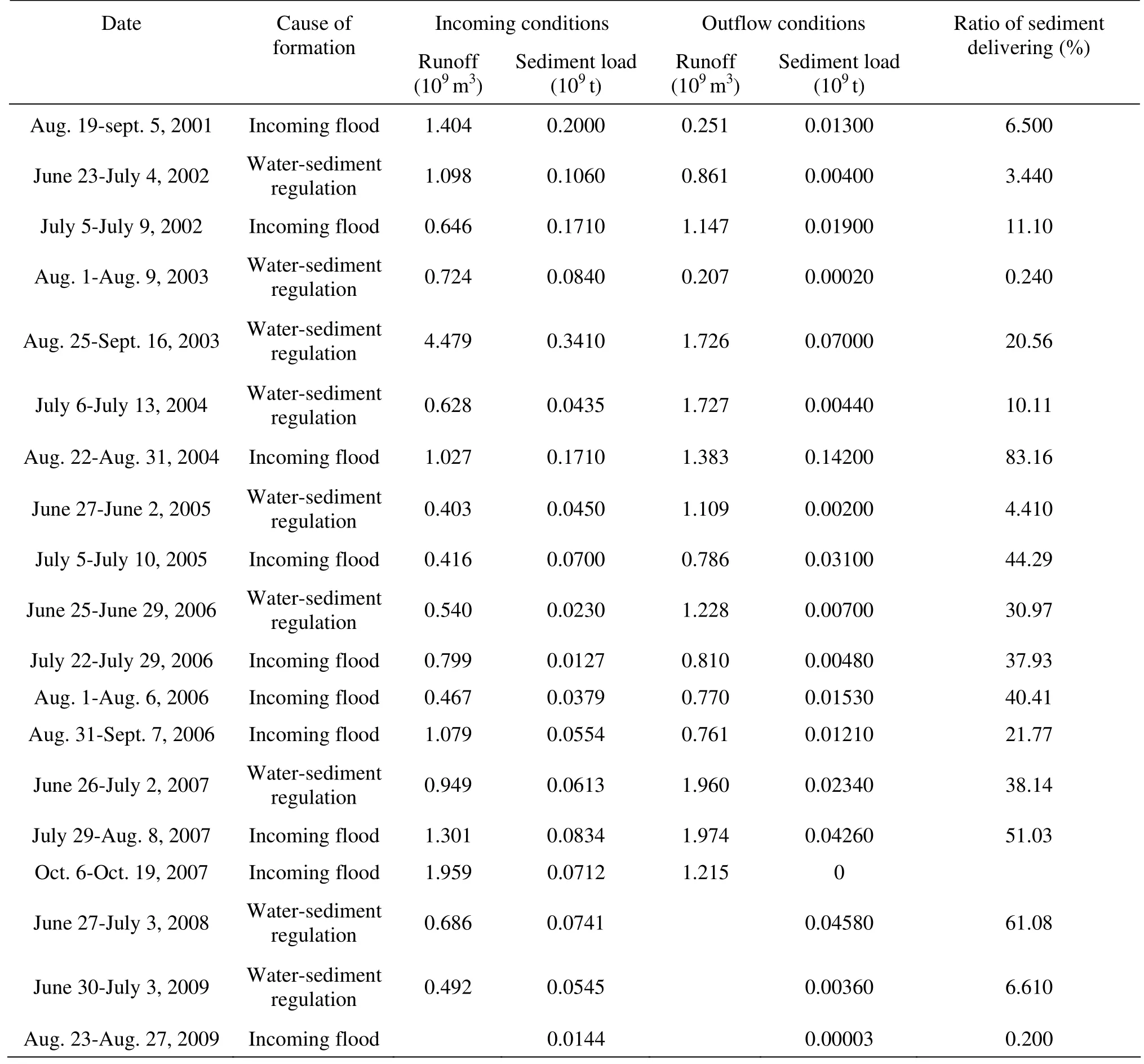
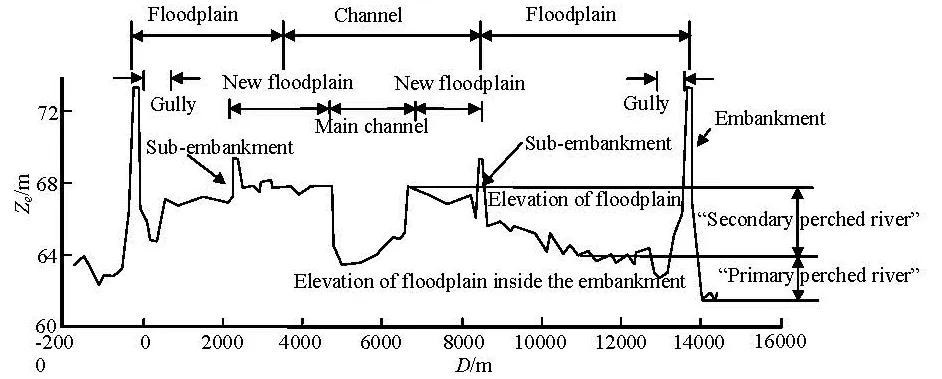

2. The Lower Yellow River
3. Channel erosion of the LYR in the initial operation of the reservoir
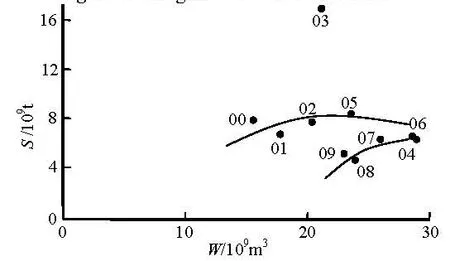
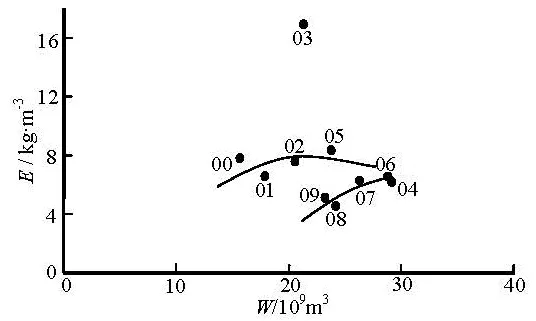
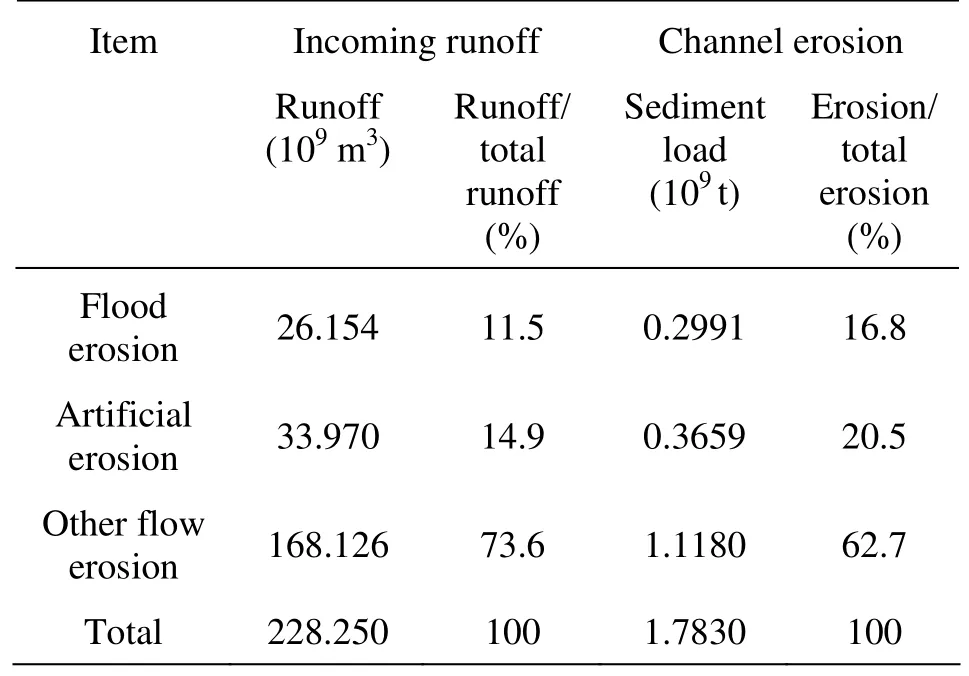
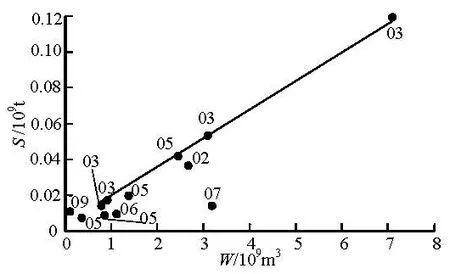
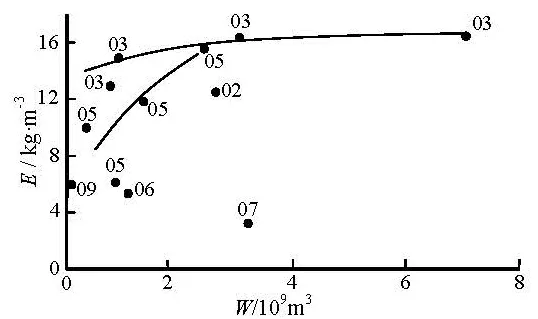
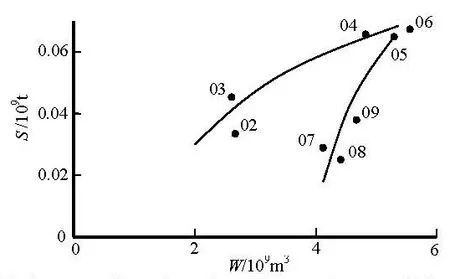
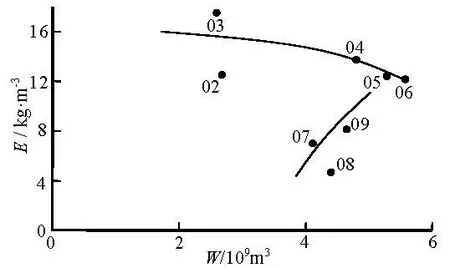
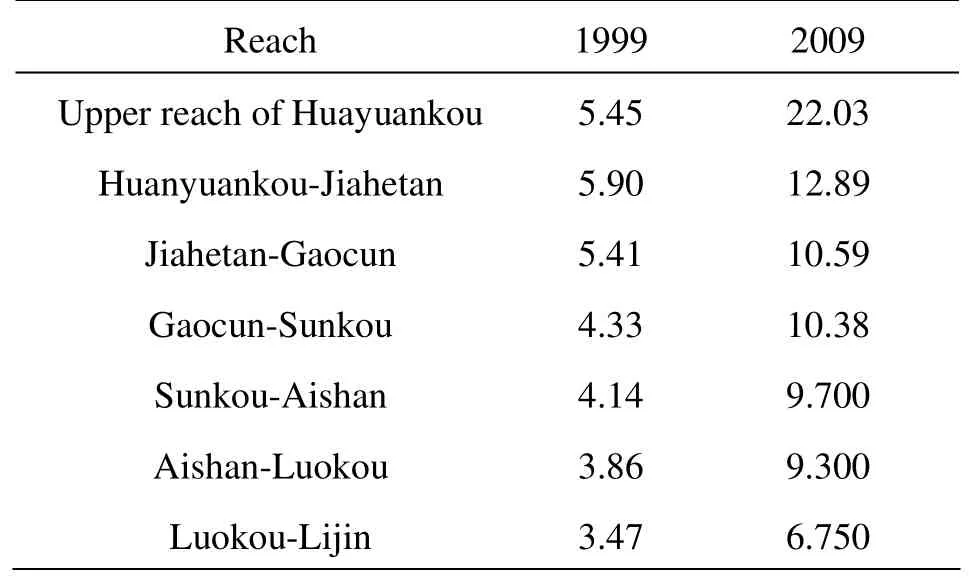
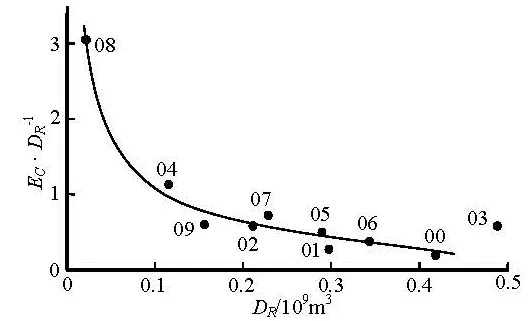
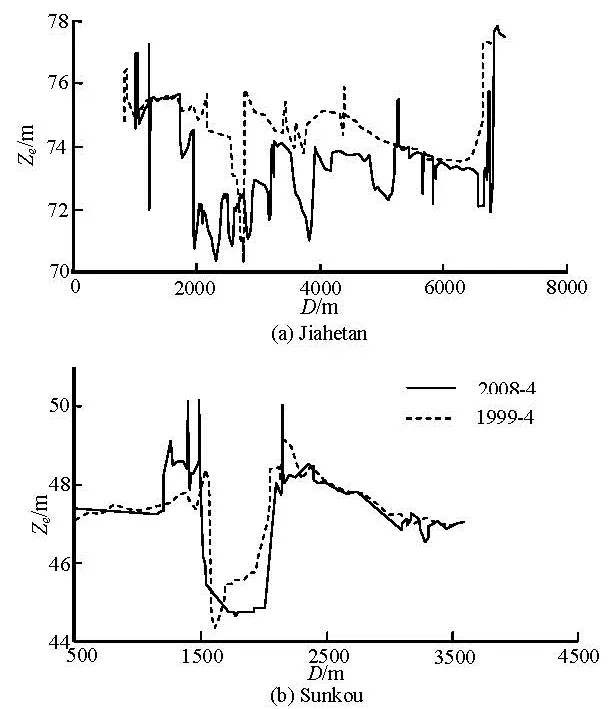



4. Modification of channel morphology
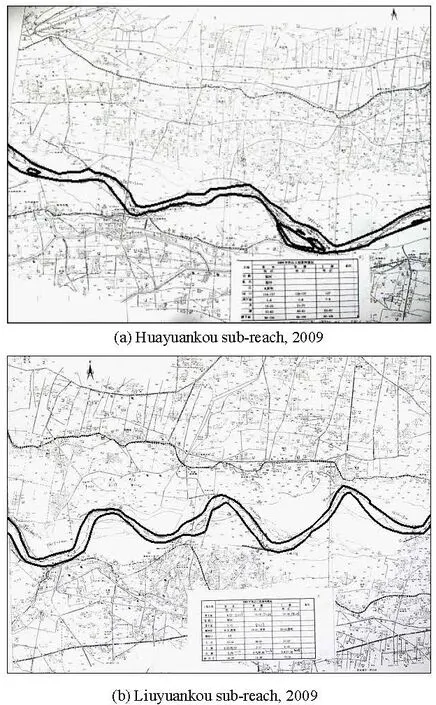
5. Conclusions
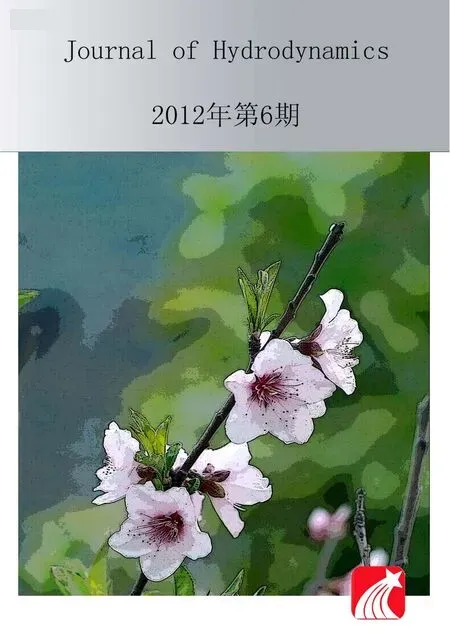 水動(dòng)力學(xué)研究與進(jìn)展 B輯2012年6期
水動(dòng)力學(xué)研究與進(jìn)展 B輯2012年6期
- 水動(dòng)力學(xué)研究與進(jìn)展 B輯的其它文章
- DIFFUSING OF AN AMMONIA MOLECULE IN WATER IN A VERY SHORT TIME PERIOD*
- 3-D VARIABLE PARAMETER NUMERICAL MODEL FOR EVALUATION OF THE PLANNED EXPLOITABLE GROUNDWATER RESOURCE IN REGIONAL UNCONSOLIDATED SEDIMENTS*
- NUMERICAL STUDY OF THE PITCHING MOTIONS OF SUPERCAVITATING VEHICLES*
- HEAT TRANSFER OF TiO2/WATER NANOFLUID IN A COILED AGITATED VESSEL WITH PROPELLER*
- A FAST LAGRANGIAN SIMULATION METHOD FOR FLOW ANALYSIS AND RUNNER DESIGN IN PELTON TURBINES*
- TRANSPORT OF BICOMPONENT CONTAMINANT IN FREE-SURFACE WETLAND FLOW*
